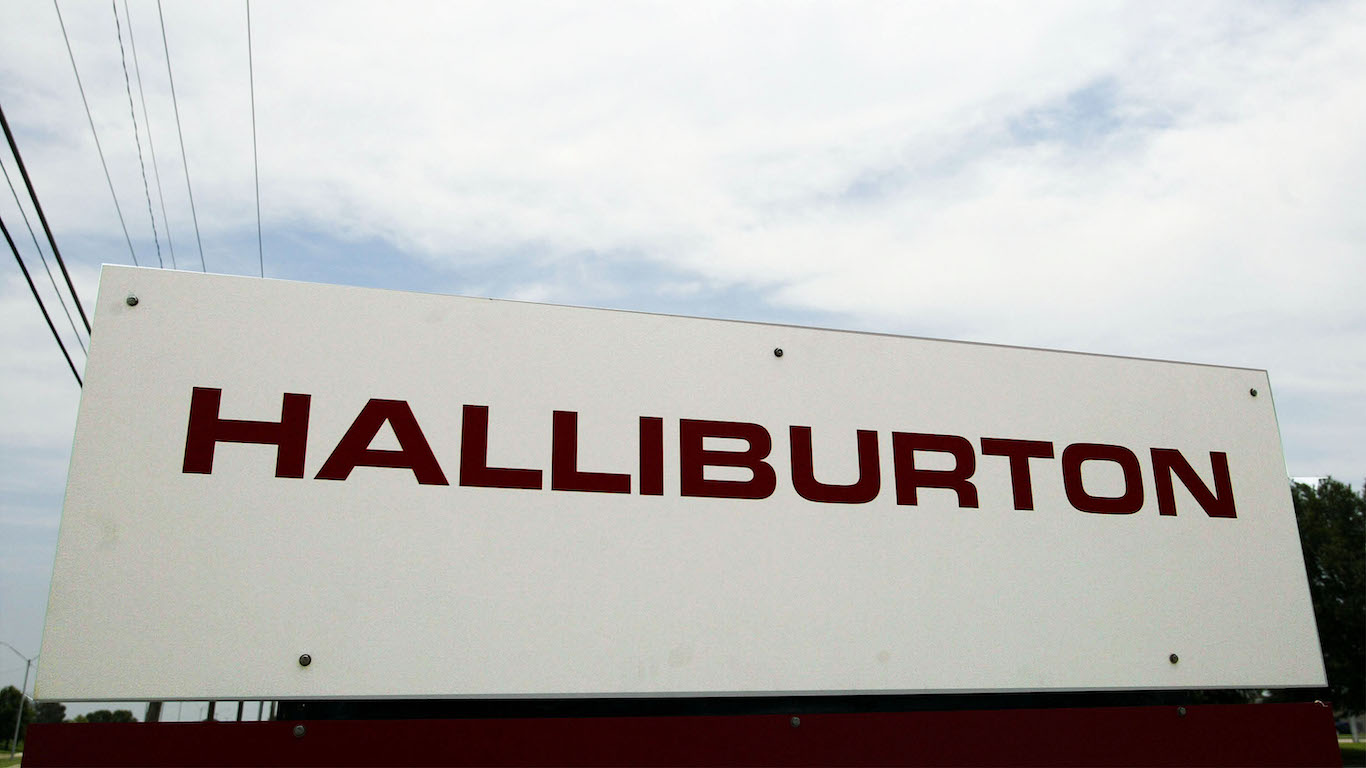
When Halliburton Co. (NYSE: HAL) reported first-quarter 2019 results before markets opened Monday, the oil and gas services company posted adjusted diluted earnings per share (EPS) of $0.31 on revenues of $5.04 billion. In the same period a year ago, the company reported EPS of $0.23 on revenues of $5.74 billion. First-quarter results also compare to consensus estimates for EPS of $0.24 per share and $5.01 billion in revenues.
With crude oil dropping below $15 a barrel early Monday, Halliburton stock had given up about a quarter of its Friday gain of 13.6% before it released its earnings report. The company offered no guidance but did say this: “For the remainder of 2020, the Company expects a further decline in revenue and profitability, particularly in North America.”
On a GAAP basis, Halliburton posted a quarterly net loss of $1.0 billion ($1.16 per share), compared to net income a year ago of $152 million, or $0.17 per share. Excluding impairments and other charges, adjusted operating income was $502 million in the first quarter of 2020, an 18% increase from adjusted operating income of $426 million in the first quarter of 2019.
Adjusted net income for the quarter totaled $270 million and excludes $1.1 billion in pretax impairment charges. The charges were primarily noncash asset impairments. The company also recognized a noncash tax expense of approximately $310 million for an adjustment to its deferred tax assets. In the fourth quarter, Halliburton took a $2.2 billion impairment charge.
Chair and CEO Jeff Miller said:
Our industry is facing the dual shock of a massive drop in global oil demand coupled with a resulting oversupply. Consequently, we expect activity in North America land to sharply decline during the second quarter and remain depressed through year-end, impacting all basins. Internationally, we believe the activity changes will not be uniform across all markets. OPEC+ production decisions and the duration of pandemic-related demand and activity disruptions will ultimately determine the extent of international spending declines this year. … We are taking swift actions to reduce overhead and other costs by approximately $1 billion, lower capital expenditures to $800 million, and improve working capital. We will take further actions as necessary to adjust to evolving market conditions.
North American revenue rose by 5.4% sequentially and fell by 25% year over year. International revenue rose by 5% year over year.
The consensus analyst estimates for the second quarter call for a loss per share of $0.01 and revenues of $4.06 billion. For the fiscal year, analysts are looking for EPS of $0.03 and revenues of $16.34 billion.
In Monday’s premarket session, Halliburton stock traded down about 4.4% to $7.25 after closing Friday at $7.58. The stock’s 52-week range is $4.25 to $32.09, and the consensus 12-month price target is $9.57.
Halliburton currently pays a dividend of $0.72 annually (yield of 10.79%).
Take This Retirement Quiz To Get Matched With An Advisor Now (Sponsored)
Are you ready for retirement? Planning for retirement can be overwhelming, that’s why it could be a good idea to speak to a fiduciary financial advisor about your goals today.
Start by taking this retirement quiz right here from SmartAsset that will match you with up to 3 financial advisors that serve your area and beyond in 5 minutes. Smart Asset is now matching over 50,000 people a month.
Click here now to get started.
Thank you for reading! Have some feedback for us?
Contact the 24/7 Wall St. editorial team.
 24/7 Wall St.
24/7 Wall St.


